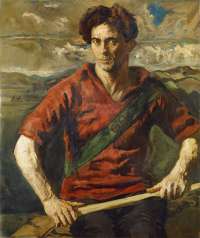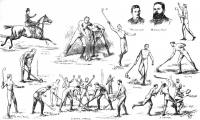Hurling

The fastest game on grass, and the sexiest legs in Europe: a traditional Irish sport, older than our recorded history – the ancient Gaelic myths portray their heroes playing hurling.
Entirely amateur, fifteen men a side (exactly men: the women's game is called Camogie), played with a cumán or "hurley" made of ash-wood, and a small hard ball called a sliotar which is "pucked" or propelled at speeds of 90mph – the "clash of the ash" is as evocative of Ireland as "leather on willow" is of sleepy English cricketing summers.
Hurling – Fastest Game on Grass
Guinness advert showing well the tensions of the game.

GAA and the "ban" – hurling was codified in the late 19th century by the Gaelic Athletic Association – one of the most successful of Irish-Ireland movements. The GAA, having standardized the rules, immediately set about codifying who might play and who might not. Anyone associated with the British military, police or administration was banned. Anyone who played the "foreign" sports of rugby or cricket, hockey or soccer was banned. You were banned if you watched a "foreign" game; banned if you attended a dance held at the sports club of a "foreign" game. Indeed you were banned if you danced in any way at all that was thought to be "un-Irish" or to music that wasn't Irish. And, as Doyler remarks, you were suspended if you spoke in English on the field.
Something similar had occurred five hundred years previous. The Statutes of Kilkenny, 1366, had attempted to maintain the purity of the English in Ireland from admixture with the "mere Irish". Along with bans on intermarriage and the like, the English were forbidden to "use the plays which men call hurlings".